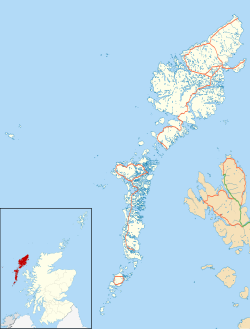South Dell
| |
|---|---|
 Dail bho Dheas, South Dell | |
Location within the Outer Hebrides | |
| Language | Scottish Gaelic English |
| OS grid reference | NB483614 |
| Civil parish | |
| Council area | |
| Lieutenancy area | |
| Country | Scotland |
| Sovereign state | United Kingdom |
| Post town | STORNOWAY |
| Postcode district | HS2 |
| Dialling code | 01851 |
| Police | Scotland |
| Fire | Scottish |
| Ambulance | Scottish |
| UK Parliament | |
| Scottish Parliament | |
South Dell (Scottish Gaelic : Dail-bho-Dheas) is a village on the Isle of Lewis in the community of Ness, in the Outer Hebrides, Scotland. South Dell is within the parish of Barvas, [1] and is situated alongside the A857. [2] The Dell River separates South and North Dell. [3] The artists David Greenall and Ruth O'Dell live in South Dell. [4]



